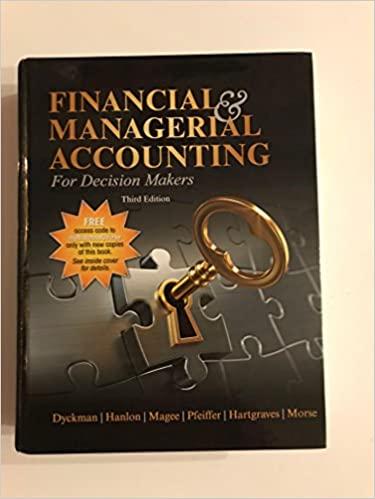Answered step by step
Verified Expert Solution
Question
1 Approved Answer
plz help, there are 4 parts to this question. 1 Part of 16 point Required information Use the following information for the Exercises 3-7 below.
plz help, there are 4 parts to this question. 




1 Part of 16 point Required information Use the following information for the Exercises 3-7 below. (Algo) [The following formation applies to the questions displayed below) Loker Company reported the following January purchases and sales data for its only product. The Company uses a perpetual inventory system For specific identification, ending inventory consists of 280 units from the January 30 purchase, 5 units from the January 20 purchase, and 15 units from beginning inventory Date Activities Units Acquired at Cost Units sold at Retail January 1 Beginning inventory 190 units $7.00 = $ 1,330 January 10 Sales 150 units 5 16.00 January 20 Purchase 110 units 5 6.00 660 January 25 Sales 130 units $ 16.00 January 30 Purchase 250 units $ 5.50 1.540 Totals 580 units $ 3,530 280 units : Ak Exercise 6-3 (Algo) Perpetual: Inventory costing methods LO P1 Required: 1. Complete the table to determine the cost assigned to ending inventory and cost of goods sold using specific identification, 2. Determine the cost assigned to ending inventory and to cost of goods sold using weighted average. 3. Determine the cost assigned to ending inventory and to cost of goods sold using FIFO, 4. Determine the cost assigned to ending inventory and to cost of goods sold using LIFO. Complete this question by entering your answers in the tabs below. Complete this question by entering your answers in the tabs below. Specific is Weighted Average TIPO uro Complete the table to determine the cost assigned to ending Inventory and cost of goods sold using specific identification Specific Identification Available for Sale Cost of Goods Sold Ending Inventory Purchase Date Activity Ending w of units Cost Per Unit sold COGS Inventory Ending Cost Per Unit Units Inventory. Cost January 1 Beginning inventory 190 January 20 Purchase 110 January 30 Purchase 280 580 # of units Cost Per Unit Weighted Average > Complete this question by entering your answers in the tabs below. Specific la Weighted FIFO LIFO Average Determine the cost assigned to ending Inventory and to cost of goods sold using weighted average. (Round cost per unit to 2 decimal places.) Weighted Average. Perpetual Goods Purchased Cost of Goods Sold Inventory Balance Date Cost per of units Cost per Cost of Goods # of units #of units unit sold unit Cost per unit Inventory Balance Sold January 1 190 at $ 700 = 1,330,00 January 10 S January 20 Average cost January 20 January 25 January 30 Totals Required information Specific la Weighted FIFO LIFO Average Determine the cost assigned to ending inventory and to cost of goods sold using FIFO. Perpetual FIFO: Goods Purchased Cost of Goods Sold Inventory Balance Date Cost per #of units Cost per Cost of Goods # of units # of units Cost per Inventory Balanco unit sold unit Sold unit January 1 190 at $ 7.00 = $ 1,330.00 January 10 January 20 Total January 20 January 25 Total January 25 January 30 Totals Walandann Required information FIFO Specific Id Weighted Average LIFO Determine the cost assigned to ending inventory and to cost of goods sold using LIFO. Perpetual LIFO: Goods Purchased Cost of Goods Sold Date # of units Cost por #of units Cost per Cost of Goods # of units unit Sold January 1 190 at Inventory Balance Cost per Inventory Balance unit $ 7.00 - $ 1.330.00 sold unit January 10 January 20 Total January 20 January 25 Total January 25 January 30 Totals 




Step by Step Solution
There are 3 Steps involved in it
Step: 1

Get Instant Access to Expert-Tailored Solutions
See step-by-step solutions with expert insights and AI powered tools for academic success
Step: 2

Step: 3

Ace Your Homework with AI
Get the answers you need in no time with our AI-driven, step-by-step assistance
Get Started


